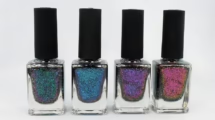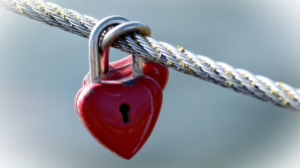The Science of Love: How Your Brain Reacts When You’re Falling
Love, that elusive and powerful emotion, has captivated poets, philosophers, and artists for centuries. Yet, beneath the romantic musings and artistic interpretations lies a complex interplay of biological processes, chemical reactions, and neurological activity. While the experience of falling in love may feel ethereal and magical, it is, at its core, a deeply rooted phenomenon orchestrated by the human brain.
This article delves into the science of love, exploring the fascinating neurological and hormonal changes that occur within our brains when we experience romantic attraction. We will dissect the various stages of love, from initial attraction to long-term commitment, examining the key brain regions and neurochemicals involved in each phase. Understanding the science behind love not only demystifies this powerful emotion but also provides valuable insights into human behavior, relationships, and the very essence of connection.
I. The Evolutionary Roots of Love: A Survival Mechanism
Before delving into the neurobiology of love, it’s crucial to understand its evolutionary origins. From a biological perspective, love is not merely a pleasant feeling; it’s a powerful survival mechanism [mfn 1][#ref1] designed to ensure the propagation of our genes. Throughout human history, forming pair bonds has been essential for raising offspring and ensuring their survival. Love, therefore, evolved as a way to promote cooperation, commitment, and long-term partnerships.
-
Attachment and Pair Bonding: Attachment theory, developed by John Bowlby and Mary Ainsworth [mfn 2][#ref2], posits that our early childhood experiences with caregivers shape our attachment styles, which in turn influence our romantic relationships in adulthood. These attachment styles – secure, anxious-preoccupied, dismissive-avoidant, and fearful-avoidant – reflect our comfort level with intimacy and our fear of abandonment.
-
Survival of the Fittest Genes: Evolutionary psychologists argue that mate selection is driven by an unconscious desire to find a partner who will contribute to the survival and well-being of our offspring [mfn 3][#ref3]. This explains why certain traits, such as physical attractiveness (signifying good health) and resourcefulness (indicating the ability to provide for offspring), are often considered desirable in potential partners.
II. The Three Stages of Love: Attraction, Lust, and Attachment
Helen Fisher, a renowned biological anthropologist, has proposed a three-stage model of love: lust, attraction, and attachment [mfn 4][#ref4]. Each stage is characterized by a distinct set of hormones and brain activity, reflecting the different priorities and goals associated with each phase of romantic involvement.
A. Lust: The Drive for Sexual Gratification
Lust, also known as libido or sexual desire, is primarily driven by sex hormones, namely testosterone and estrogen. While these hormones are often associated with male and female reproductive systems, respectively, they are present in both sexes and play a crucial role in initiating romantic interest.
-
Testosterone: In both men and women, testosterone influences libido and contributes to feelings of arousal and sexual desire [mfn 5][#ref5]. Higher levels of testosterone may lead to increased sexual activity and a greater focus on finding a mate.
-
Estrogen: In women, estrogen plays a critical role in regulating the menstrual cycle and promoting sexual receptivity. However, its influence on libido is more complex and can be modulated by other hormones and factors.
The brain regions associated with lust include the hypothalamus and the amygdala. The hypothalamus, a region involved in regulating basic drives and motivations, orchestrates the release of sex hormones, while the amygdala, which processes emotions, contributes to feelings of arousal and sexual excitement.
B. Attraction: The Focus and Fascination Stage
Attraction is the stage where we become intensely focused on a specific individual and experience a strong desire to be near them. This stage is characterized by increased energy, decreased appetite, sleeplessness, and an overall sense of euphoria. Several key neurotransmitters play crucial roles in this phase.
-
Dopamine: Often referred to as the “pleasure chemical,” dopamine is a neurotransmitter associated with reward, motivation, and pleasure [mfn 6][#ref6]. When we are attracted to someone, dopamine levels surge in brain regions like the ventral tegmental area (VTA) and the nucleus accumbens, which are part of the brain’s reward system. This surge of dopamine creates feelings of intense pleasure and motivates us to seek out the object of our affection. This is the same system activated by addictive drugs, which may explain why love can feel so addictive.
-
Norepinephrine (Adrenaline): Norepinephrine, also known as noradrenaline, is a neurotransmitter and hormone that increases heart rate, blood pressure, and alertness [mfn 7][#ref7]. When we are attracted to someone, norepinephrine levels rise, leading to the physiological symptoms associated with love, such as sweaty palms, a racing heart, and a general feeling of excitement.
-
Serotonin: Intriguingly, studies have shown that serotonin levels, a neurotransmitter associated with mood regulation and happiness, are actually lower in individuals who are newly in love [mfn 8][#ref8]. These levels are comparable to those found in individuals with obsessive-compulsive disorder (OCD), which may explain the obsessive thoughts and behaviors often associated with the early stages of love.
The brain regions associated with attraction include the VTA, the nucleus accumbens, and the anterior cingulate cortex (ACC). The VTA and nucleus accumbens, as mentioned earlier, are key components of the brain’s reward system, while the ACC is involved in attention and focus, helping us to concentrate on the object of our affection.
C. Attachment: The Long-Term Bond
Attachment is the stage characterized by feelings of comfort, security, and emotional connection. This stage is essential for long-term relationships and for raising children. Two key hormones play a central role in this phase: oxytocin and vasopressin.
-
Oxytocin: Often referred to as the “love hormone” or the “cuddle hormone,” oxytocin is released during physical contact, such as hugging, kissing, and sexual intimacy [mfn 9][#ref9]. Oxytocin promotes feelings of trust, bonding, and attachment. It also plays a crucial role in maternal bonding and lactation.
-
Vasopressin: Vasopressin is a hormone associated with commitment, loyalty, and long-term pair bonding [mfn 10][#ref10]. Studies in prairie voles, which are monogamous animals, have shown that vasopressin receptors in certain brain regions are crucial for forming and maintaining strong pair bonds. While the role of vasopressin in human relationships is still being investigated, research suggests that it contributes to feelings of commitment and protectiveness towards a partner.
The brain regions associated with attachment include the hypothalamus, the amygdala, and the prefrontal cortex. The hypothalamus, as mentioned earlier, plays a role in hormone regulation, while the amygdala helps to process emotions related to fear and anxiety. The prefrontal cortex, which is involved in decision-making and social behavior, helps us to navigate the complexities of long-term relationships.
III. The Brain in Love: A Detailed Look at Key Regions
Beyond the hormonal and neurotransmitter changes, specific brain regions undergo significant alterations in activity when we are in love. Examining these regions provides a deeper understanding of the neurological underpinnings of romantic love.
-
The Ventral Tegmental Area (VTA): As mentioned previously, the VTA is a key component of the brain’s reward system. When we are in love, the VTA becomes highly active, releasing dopamine and triggering feelings of pleasure and motivation [mfn 11][#ref11]. This activity is similar to that seen in individuals who are addicted to drugs, suggesting that love can indeed be an addictive experience.
-
The Nucleus Accumbens: This region, which receives dopamine from the VTA, is also involved in reward and pleasure processing [mfn 12][#ref12]. Increased activity in the nucleus accumbens contributes to the intense feelings of joy and satisfaction associated with being in love.
-
The Anterior Cingulate Cortex (ACC): The ACC plays a role in attention, focus, and emotional regulation [mfn 13][#ref13]. In the early stages of love, the ACC becomes highly active, helping us to focus our attention on the object of our affection and to regulate the intense emotions associated with this experience.
-
The Insula: This region is involved in processing emotions, particularly those related to disgust and social rejection [mfn 14][#ref14]. Interestingly, studies have shown that activity in the insula decreases when we are in love, suggesting that love may suppress negative emotions and enhance feelings of acceptance and connection.
-
The Prefrontal Cortex: The prefrontal cortex is responsible for higher-level cognitive functions, such as decision-making, planning, and social behavior [mfn 15][#ref15]. While the prefrontal cortex is generally involved in regulating emotions and behaviors, its activity tends to decrease in the early stages of love. This may explain why people in love sometimes act impulsively or make irrational decisions.
-
The Amygdala: This region, which is involved in processing emotions like fear and anxiety, shows a complex pattern of activity in relation to love [mfn 16][#ref16]. While the amygdala may become less active in the early stages of love, as the relationship progresses and commitment deepens, its activity may increase, reflecting the anxieties and uncertainties that can arise in long-term relationships.
IV. The Role of Genetics in Love: Nature vs. Nurture
While environmental factors and personal experiences undoubtedly shape our romantic relationships, genetics also plays a significant role in influencing our predisposition to love, attachment styles, and even mate selection.
-
Genes and Attachment Styles: Research suggests that certain genes may be associated with specific attachment styles [mfn 17][#ref17]. For example, variations in genes related to serotonin and dopamine transmission may influence an individual’s tendency towards anxious or avoidant attachment.
-
Genes and Mate Selection: Some studies have found evidence that individuals may be more attracted to potential partners who have different versions of certain immune system genes, such as the major histocompatibility complex (MHC) [mfn 18][#ref18]. This may be because mating with someone with different MHC genes could lead to offspring with a stronger immune system.
-
Genes and Oxytocin/Vasopressin Receptors: As mentioned earlier, oxytocin and vasopressin play crucial roles in attachment and pair bonding. Variations in the genes that code for oxytocin and vasopressin receptors may influence an individual’s capacity for forming strong attachments and their likelihood of engaging in long-term relationships [mfn 19][#ref19].
It’s important to note that genetics does not determine our romantic destiny. Rather, genes interact with environmental factors and personal experiences to shape our individual tendencies and preferences in relationships.
V. The Neurochemistry of a Broken Heart: When Love Hurts
While love can be a source of immense joy and fulfillment, it can also lead to profound pain and suffering when relationships end. The neurochemistry of heartbreak is complex and involves a cascade of hormonal and neurotransmitter changes that mirror the symptoms of addiction withdrawal.
-
Dopamine Withdrawal: When a romantic relationship ends, dopamine levels plummet in the brain’s reward system, leading to feelings of sadness, emptiness, and craving [mfn 20][#ref20]. This dopamine withdrawal can be particularly intense if the relationship was highly rewarding and stimulating.
-
Increased Cortisol: Cortisol, the stress hormone, rises sharply after a breakup, contributing to feelings of anxiety, depression, and physical discomfort [mfn 21][#ref21]. Chronic stress can also weaken the immune system and increase the risk of health problems.
-
Oxytocin Deficiency: The loss of physical contact and emotional intimacy after a breakup leads to a decrease in oxytocin levels, further exacerbating feelings of loneliness and isolation [mfn 22][#ref22].
-
Activation of Pain Pathways: Neuroimaging studies have shown that the same brain regions that are activated when experiencing physical pain are also activated when experiencing emotional pain after a breakup [mfn 23][#ref23]. This suggests that the pain of a broken heart is very real and can have a significant impact on our well-being.
Fortunately, the brain is resilient, and with time and support, it can recover from heartbreak. Engaging in activities that promote dopamine release, such as exercise, spending time with loved ones, and pursuing hobbies, can help to alleviate the symptoms of heartbreak and promote healing.
VI. The Future of Love: Neurotechnology and Relationships
As our understanding of the science of love continues to advance, the potential for using neurotechnology to enhance or manipulate romantic relationships becomes increasingly real. While the ethical implications of such interventions are significant, it’s important to consider the potential possibilities and challenges that lie ahead.
-
Pharmacological Interventions: In the future, it may be possible to use drugs to enhance feelings of attraction, attachment, or even to suppress the pain of heartbreak [mfn 24][#ref24]. For example, oxytocin nasal sprays are already being investigated as a potential treatment for social anxiety and relationship difficulties.
-
Brain Stimulation Techniques: Non-invasive brain stimulation techniques, such as transcranial magnetic stimulation (TMS), could potentially be used to modulate brain activity in regions associated with love and attachment [mfn 25][#ref25]. This could potentially be used to enhance positive feelings towards a partner or to reduce negative emotions.
-
Personalized Relationship Guidance: By analyzing an individual’s brain activity and hormonal levels, it may be possible to provide personalized relationship guidance that is tailored to their specific needs and challenges [mfn 26][#ref26].
While these technologies hold promise, it’s crucial to proceed with caution and to carefully consider the ethical implications of manipulating such a fundamental human experience as love.
VII. Conclusion: Embracing the Mystery of Love
The science of love provides a fascinating glimpse into the complex biological processes that underlie this powerful emotion. By understanding the key brain regions and neurochemicals involved in attraction, attachment, and heartbreak, we can gain valuable insights into human behavior, relationships, and the very essence of connection.
However, it’s important to remember that love is more than just a collection of chemical reactions and neurological processes. It is also a deeply personal and subjective experience that is shaped by our individual histories, values, and beliefs. While science can illuminate the biological foundations of love, it cannot fully capture the mystery and magic of this profound emotion.
Ultimately, embracing the science of love can enhance our understanding of ourselves and our relationships, allowing us to navigate the complexities of love with greater awareness, empathy, and compassion. It empowers us to make informed choices, build stronger connections, and appreciate the beauty and wonder of the human heart. The quest to understand love is an ongoing journey, one that combines the rigor of scientific inquiry with the timeless wisdom of the human experience. Love, in all its complexity and mystery, remains one of the most powerful and enduring forces in the human experience, a force that continues to inspire, challenge, and enrich our lives.
References:
[#ref1]: [mfn 1] Buss, D. M. (2003). The evolution of desire: Strategies of human mating. Basic Books. [#ref2]: [mfn 2] Bowlby, J. (1969). Attachment and loss, Vol. 1: Attachment. Attachment and Loss. New York: Basic Books. [#ref3]: [mfn 3] Miller, G. (2000). The mating mind: How sexual choice shaped the evolution of human nature. Anchor Books. [#ref4]: [mfn 4] Fisher, H. (2004). Why we love: The nature and chemistry of romantic love. Henry Holt and Company. [#ref5]: [mfn 5] Bancroft, J. (2009). Human sexuality and its problems (2nd ed.). W. W. Norton & Company. [#ref6]: [mfn 6] Wise, R. A. (2004). Dopamine, learning and motivation. Nature Reviews Neuroscience, 5(6), 483-494. [#ref7]: [mfn 7] Goldstein, D. S. (2010). Adrenaline and noradrenaline: Recent advances. Clinical Endocrinology & Metabolism, 24(1), 1-17. [#ref8]: [mfn 8] Marazziti, D., Akiskal, H. S., Rossi, A., & Cassano, G. B. (1999). Altered peripheral serotonin transport in romantic love. Psychological Medicine, 29(3), 741-745. [#ref9]: [mfn 9] Carter, C. S. (2014). Oxytocin pathways and the evolution of human social behavior. Annual Review of Psychology, 65, 17-39. [#ref10]: [mfn 10] Insel, T. R., & Young, L. J. (2001). The neurobiology of attachment. Nature Reviews Neuroscience, 2(2), 129-136. [#ref11]: [mfn 11] Aron, A., Fisher, H., Mashek, D. J., Strong, G., Li, H., & Brown, L. L. (2005). Reward, motivation, and emotion systems associated with early-stage intense romantic love. Journal of Neurophysiology, 94(1), 327-337. [#ref12]: [mfn 12] Haber, S. N., & Knutson, B. (2010). The reward circuit: Linking primate anatomy and human imaging. Neuropsychopharmacology, 35(1), 4-26. [#ref13]: [mfn 13] Bush, G., Luu, P., & Posner, M. I. (2000). Cognitive and emotional influences in anterior cingulate cortex. Trends in Cognitive Sciences, 4(6), 215-222. [#ref14]: [mfn 14] Wicker, B., Keysers, C., Plailly, J., Royet, J. P., Gallese, V., & Rizzolatti, G. (2003). Both of us disgusted in my insula: The common neural basis of seeing and feeling disgust. Neuron, 40(3), 655-664. [#ref15]: [mfn 15] Miller, E. K., & Cohen, J. D. (2001). An integrative theory of prefrontal cortex function. Annual Review of Neuroscience, 24, 167-202. [#ref16]: [mfn 16] LeDoux, J. E. (2000). Emotion circuits in the brain. Annual Review of Neuroscience, 23, 155-184. [#ref17]: [mfn 17] Gillath, O., Shaver, P. R., Baek, J. M., & Chun, D. S. (2008). Genetic correlates of adult attachment style. Personality and Social Psychology Bulletin, 34(10), 1396-1405. [#ref18]: [mfn 18] Wedekind, C., Seebeck, T., Bettens, F., & Paepke, A. J. (1995). MHC-dependent mate preferences in humans. Proceedings of the Royal Society of London. Series B: Biological Sciences, 260(1359), 251-253. [#ref19]: [mfn 19] Walum, H., Westberg, L., Henningsson, S., Neiderhiser, J. M., Reiss, D., Iglauer, K., . . . Lichtenstein, P. (2008). Genetic variation in the vasopressin receptor gene (AVPR1A) associates with pair-bonding behavior in humans. Proceedings of the National Academy of Sciences, 105(41), 14153-14156. [#ref20]: [mfn 20] Fisher, H. E., Brown, L. L., Aron, A., Strong, G., & Mashek, D. (2010). Reward, addiction, and emotion regulation systems associated with rejection in love. Journal of Neurophysiology, 104(1), 51-60. [#ref21]: [mfn 21] Hoover, D. W., & Miller, K. J. (2009). Physiological responses to marital conflict: Associations with observed behavior and self-reported affect. Journal of Family Psychology, 23(6), 830-839. [#ref22]: [mfn 22] Light, K. C., Grewen, K. M., & Amico, J. A. (2005). More frequent partner hugs and higher oxytocin levels are linked to lower blood pressure and heart rate in premenopausal women. Biological Psychology, 69(1), 5-21. [#ref23]: [mfn 23] Kross, E., Berman, M. G., Mischel, W., Smith, E. E., & Wager, T. D. (2011). Social rejection shares somatosensory representations with physical pain. Proceedings of the National Academy of Sciences, 108(15), 6270-6275. [#ref24]: [mfn 24] Earp, B. D., Sandberg, A., Kahane, G., & Savulescu, J. (2014). When is it acceptable to use psychiatric medication to enhance love and marriage?. Philosophy, Psychiatry, & Psychology, 21(1), 1-28. [#ref25]: [mfn 25] Luber, B., Kinnunen, L. H., & Rakitin, B. C. (2017). Applications of transcranial magnetic stimulation in studies of human emotion. *Transcranial Magnetic Stimulation: A Primer, 249-272. [#ref26]: [mfn 26] Farahany, N. A. (2012). Incriminating thoughts: The privacy and reliability of neuroimaging. Stanford Law Review, 64(2), 351-408.

























Add Comment